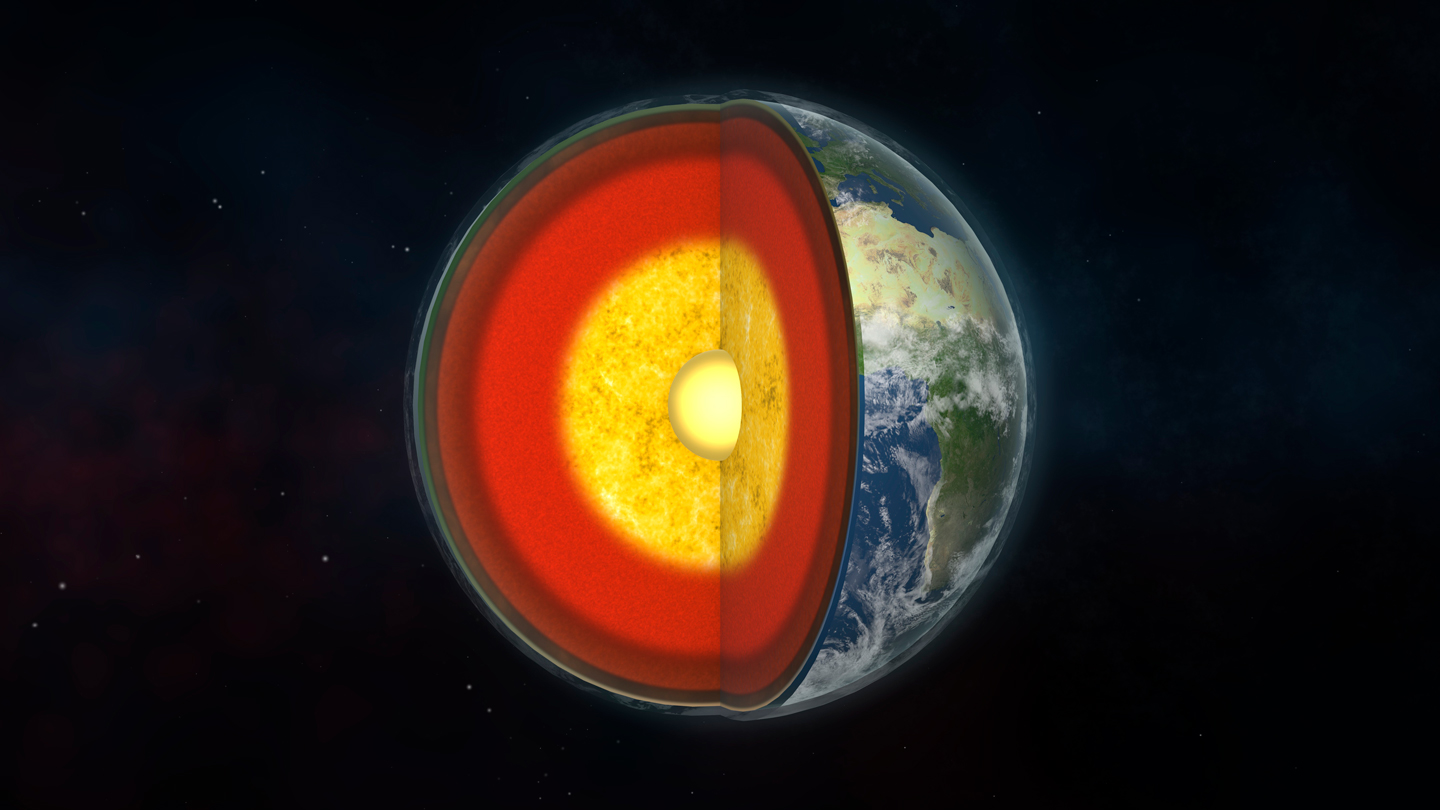Weird ‘superionic’ matter could make up Earth’s inner core
A quirky material that behaves like a mishmash of liquid and solid could be hidden deep in the Earth.
Computer simulations described in two studies suggest that the material in Earth’s inner core, which includes iron and other, lighter elements, may be in a “superionic” state. That means that while the iron stays put, as in a solid, the lighter elements flow like a liquid.
The research gives a potential peek at the inner workings of an enigmatic, inaccessible realm of the planet. According to conventional scientific wisdom, Earth’s core consists of a liquid outer core surrounding a solid inner core (SN: 1/28/19). But beyond knowing that the inner core is rich in iron, scientists don’t know exactly which other elements are present, and in what quantities.
“The inner core is very difficult to scrutinize simply because it’s so deep beneath our feet,” says geophysicist Hrvoje Tkalčić of Australian National University in Canberra.
Seismic waves stirred up by earthquakes can plow through the inner core, providing clues to what’s inside. But measurements of these waves have left researchers puzzled. The velocity of one type of wave, called a shear wave, is lower than expected for solid iron or for many types of iron alloys — mixtures of iron with other materials. “That is a mystery about the inner core,” says geophysicist Yu He of the Chinese Academy of Sciences in Guiyang.
In one new study, He and colleagues simulated a group of 64 iron atoms, along with various types of lighter elements — hydrogen, carbon and oxygen — under pressures and temperatures expected for the inner core. In a normal solid, atoms arrange themselves in an orderly grid, holding fast to their positions. In a superionic material, some of the atoms arrange neatly, as in a solid, while others are liquid-like free spirits that slip right through the solid lattice. In the simulation, the researchers found, the lighter elements moved about while the iron stayed in place.
That superionic status slowed shear waves, the researchers report February 9 in Nature, suggesting the weird phase of matter could explain the unexpected shear wave velocity measured in the inner core.
Shear waves, also known as secondary or S waves, jiggle the Earth perpendicular to their direction of travel, like the undulations that move along a jump rope that’s wiggled up and down (SNS: 1/12/18). Other waves, called primary or P waves, compress and expand the Earth in a direction parallel to their travel, like an accordion being squeezed.
To really explain the inner core, scientists must find a combination of elements that keeps with everything scientists know about the inner core, including its S wave velocity, P wave velocity and its density. “You have to match all three things, otherwise it doesn’t work,” says mineral physicist John Brodholt of University College London.
In a study published in August 2021 in Earth and Planetary Science Letters, Brodholt and colleagues did just that. A simulation of iron, silicon and hydrogen atoms reproduced the inner core’s known characteristics. In the simulation, the material was also superionic: the iron and silicon stayed in position while the hydrogen flowed like a liquid.
But Brodholt notes that their result is just one possible explanation for the inner core’s properties. Brodholt and his colleagues have previously found other combinations of elements that could explain the inner core without going superionic, he says, leaving unresolved the question of what lurks in Earth’s deepest depths.
Another puzzle of Earth’s heart is the fact that the inner core’s structure seems to change over time. This has previously been interpreted as evidence that the inner core rotates at a different rate than the rest of the Earth. But He and colleagues suggest that it could instead result from the motions of liquid-like light elements swirling inside the inner core and changing the distribution of elements over time. “This paper sort of offers an explanation for both of these phenomena” — the slow shear wave velocity and the shifting structure — says Tkalčić, who was not involved with either new study.
One thing missing is laboratory experiments showing how these combinations of elements behave under inner core conditions, says geophysicist Daniele Antonangeli of Sorbonne University in Paris, who was not involved with the new research. Such tests could help confirm whether the simulations are correct.
Previous experiments have found evidence that water ice can go superionic, perhaps under conditions found inside Uranus or Neptune (SN: 2/5/18). But researchers can’t yet re-create the conditions thought to exist inside Earth’s core. So scientists will have to keep pushing the tests to further extremes, Antonangeli says. “The experimentalist that is within me craves seeing experimental validation of this.”
For all the latest Technology News Click Here
For the latest news and updates, follow us on Google News.


